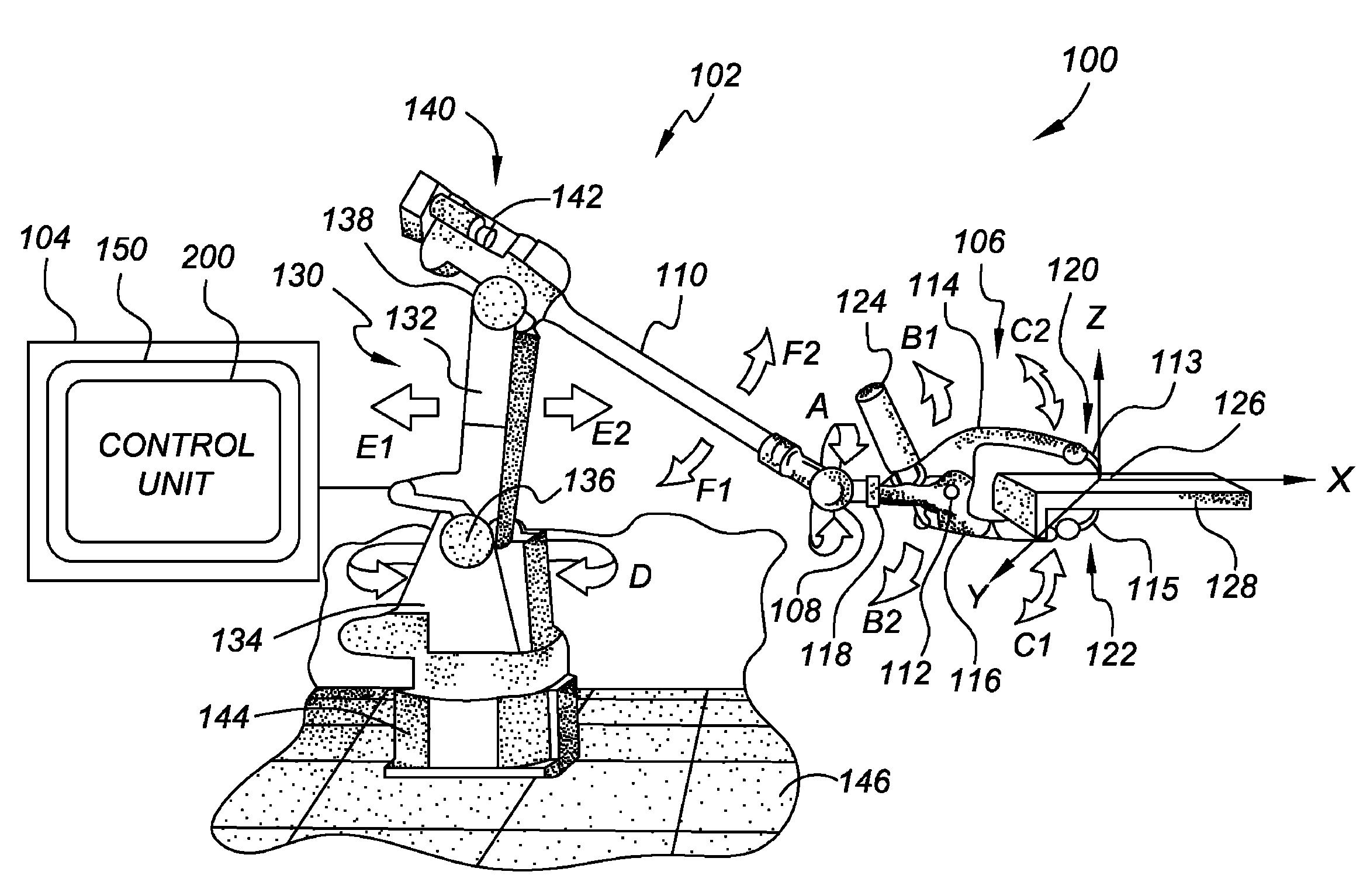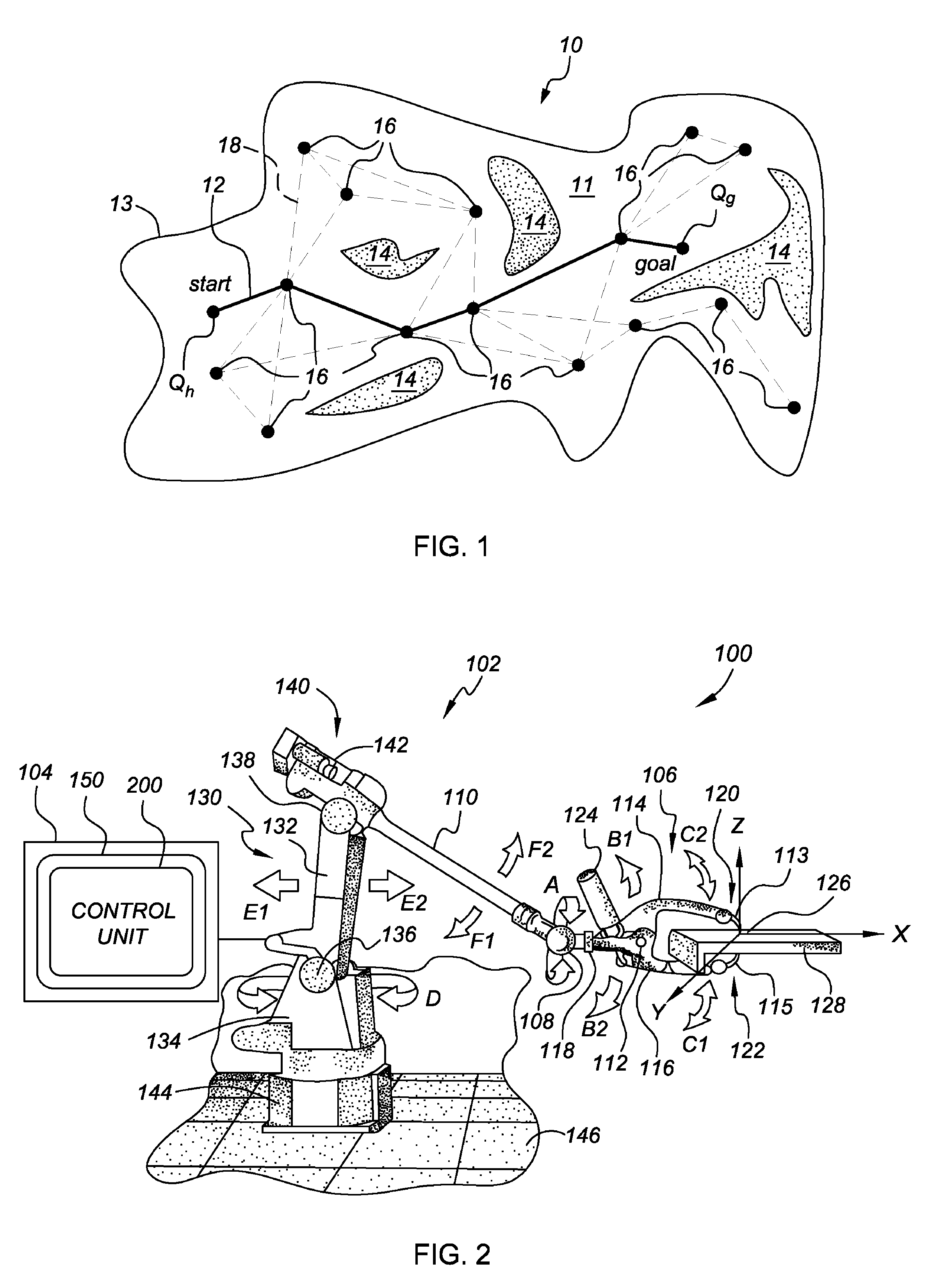Apparatus and method of automated manufacturing
a technology of automatic manufacturing and manufacturing apparatus, applied in the direction of instrumentation, electric programme control, program control, etc., can solve the problems of increasing output, reducing rework, and not providing direction for possible modifications or improvements for the next iteration
- Summary
- Abstract
- Description
- Claims
- Application Information
AI Technical Summary
Benefits of technology
Problems solved by technology
Method used
Image
Examples
Embodiment Construction
[0026]Referring to the figures, wherein like reference numbers refer to like components throughout the several views, there is shown an exemplary automated robotic welding cell or system, partially illustrated and identified generally in FIG. 2 as element 100. The present invention will be described herein with respect to the robotic welding cell 100 of FIG. 2 as an exemplary application by which the present invention may be incorporated and practiced. However, the present invention by no means is intended to be limited to the particular configuration or structure of FIG. 2. To that extent, the present invention can be used in a variety of automated manufacturing processes. By way of example, the apparatus and method provided herein can be employed for operating in a variety of welding processes, including single workpiece operations, joining two or more workpieces together, or for joining two ends of a single workpiece together, as well as non-welding based automated manufacturing ...
PUM
 Login to View More
Login to View More Abstract
Description
Claims
Application Information
 Login to View More
Login to View More - R&D
- Intellectual Property
- Life Sciences
- Materials
- Tech Scout
- Unparalleled Data Quality
- Higher Quality Content
- 60% Fewer Hallucinations
Browse by: Latest US Patents, China's latest patents, Technical Efficacy Thesaurus, Application Domain, Technology Topic, Popular Technical Reports.
© 2025 PatSnap. All rights reserved.Legal|Privacy policy|Modern Slavery Act Transparency Statement|Sitemap|About US| Contact US: help@patsnap.com



